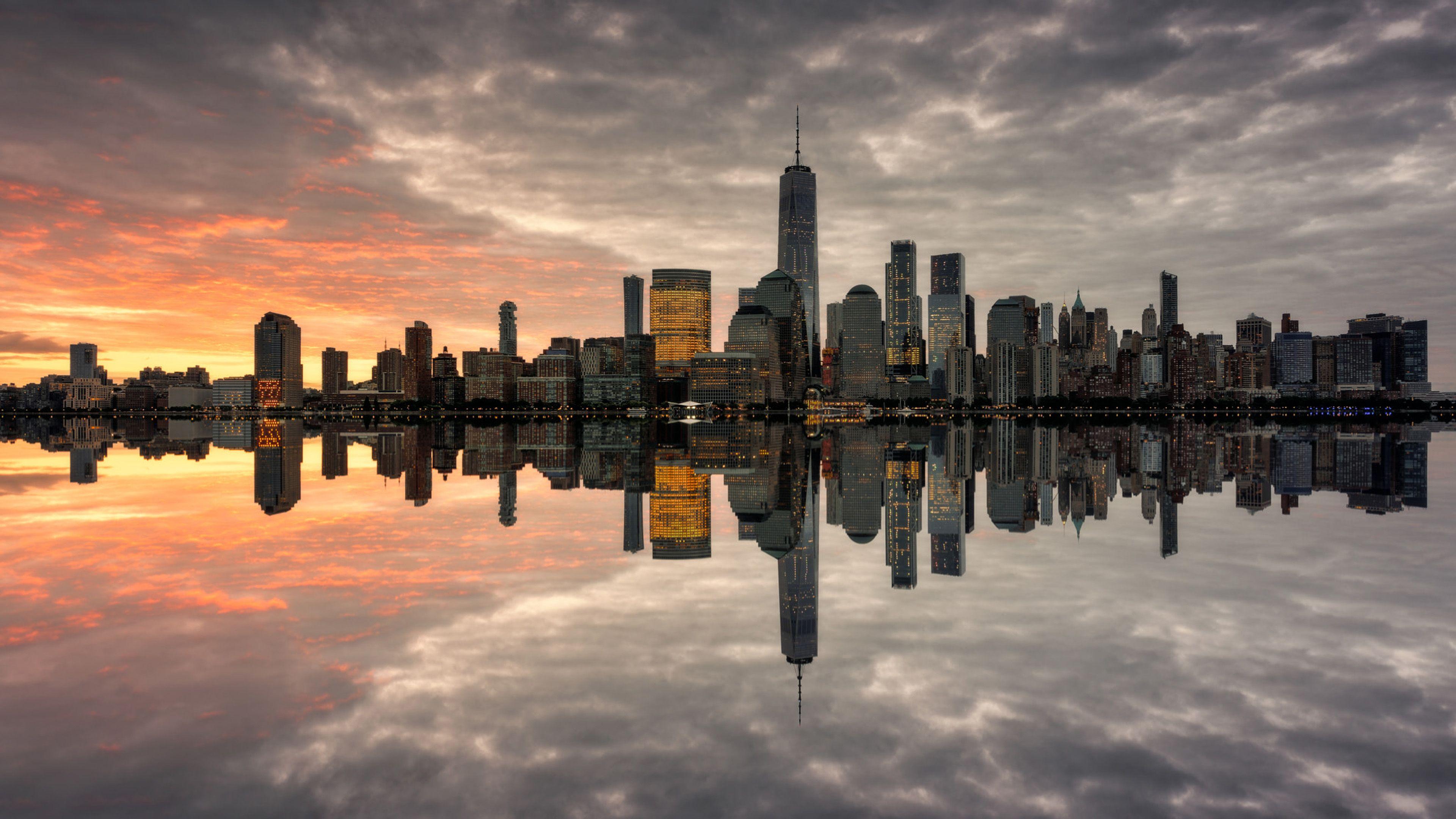The Manhattan skyline is a breathtaking sight that reflects the vibrant spirit and architectural brilliance of New York City. Towering skyscrapers, each with its unique design and story, create a silhouette that has become synonymous with the city itself. From the elegant curves of the One World Trade Center to the historic charm of the Empire State Building, the skyline is a testament to human ingenuity and ambition. As you gaze upon this magnificent urban landscape, you can't help but feel a sense of awe and inspiration, reminding us of what is possible when creativity and vision come together.
The beauty of the Manhattan skyline lies not only in its impressive structures but also in the cultural and historical significance they carry. Each building tells a tale of the city’s evolution, reflecting the changes in society, technology, and art over the decades. For many, this skyline represents dreams and aspirations, a place where opportunities abound and where the hustle and bustle of life never ceases. Whether you are a local or a visitor, experiencing the Manhattan skyline will leave an indelible mark on your heart.
As we delve deeper into the enchanting world of the Manhattan skyline, we will explore its most famous buildings, the stories behind their construction, and their impact on the city’s identity. Join us on this journey as we uncover the secrets of one of the most iconic skylines in the world, celebrating the artistry and vision that shaped it.
What Defines the Manhattan Skyline?
The Manhattan skyline is defined by its iconic buildings that stand tall against the backdrop of the sky. Each skyscraper contributes to the overall aesthetic and character of the skyline. But what exactly sets this skyline apart from others? Here are some defining features:
- Height and Density: The sheer verticality and compactness of the buildings create a dramatic effect.
- Diverse Architectural Styles: From Art Deco to Modernism, the skyline showcases a variety of design philosophies.
- Landmarks: Buildings like the Empire State Building and One World Trade Center serve as symbols of the city.
- Vantage Points: Various locations around the city offer stunning views, enhancing the experience of the skyline.
How Did the Manhattan Skyline Evolve Over Time?
The evolution of the Manhattan skyline is a fascinating story of innovation and change. In the late 19th century, the first skyscrapers began to rise, driven by technological advancements in steel construction and elevators. The skyline underwent significant transformations through the 20th century, reflecting economic booms, cultural shifts, and urban planning changes. Key milestones include:
- The completion of the Woolworth Building in 1913, which was the tallest building in the world at that time.
- The construction of the Empire State Building in 1931, a symbol of hope during the Great Depression.
- The tragic events of September 11, 2001, which reshaped the skyline and led to the development of the One World Trade Center.
- The ongoing construction of new skyscrapers, like Hudson Yards, reflecting contemporary design trends.
What Are the Most Iconic Buildings in the Manhattan Skyline?
Among the many skyscrapers that compose the Manhattan skyline, several have achieved iconic status. Here are some of the most recognizable buildings:
- Empire State Building: A timeless symbol of New York, known for its Art Deco design.
- One World Trade Center: The tallest building in the Western Hemisphere, representing resilience.
- Chrysler Building: A masterpiece of Art Deco architecture with its distinctive spire.
- Brooklyn Bridge: While not a skyscraper, its connection to Manhattan is an integral part of the skyline.
Why Is the Manhattan Skyline a Cultural Icon?
The Manhattan skyline holds a unique place in popular culture and has been featured in countless films, television shows, and artworks. Its presence evokes feelings of ambition, hope, and the bustling energy of city life. Here are some reasons why it is a cultural icon:
- Film and Television: Many movies, such as "King Kong" and "Avengers," prominently feature the skyline.
- Art: Artists like Edward Hopper and Georgia O’Keeffe have captured the essence of the skyline in their works.
- Tourism: Millions of visitors flock to New York City each year, drawn by the allure of the skyline.
What Are the Best Viewing Spots for the Manhattan Skyline?
To truly appreciate the beauty of the Manhattan skyline, one must find the best vantage points. Here are some top spots to consider:
- Top of the Rock: Offers panoramic views from the Rockefeller Center.
- One World Observatory: A breathtaking perspective from the tallest building.
- Brooklyn Bridge Park: A scenic spot for views from across the East River.
- Statue of Liberty: An iconic view of the skyline from the water.
How Does the Manhattan Skyline Change With the Seasons?
The Manhattan skyline transforms with the changing seasons, each bringing its own charm. In spring, the skyline is framed by blossoming trees; summer offers vibrant sunsets; autumn paints the city in hues of orange and gold; and winter blankets it in snow, creating a magical atmosphere.
What Is the Future of the Manhattan Skyline?
As urban development continues, the future of the Manhattan skyline looks promising. New projects are underway, focusing on sustainability and innovative design. Architects are exploring ways to integrate green spaces and smart technology into their designs, ensuring that the skyline remains relevant and inspiring for generations to come.
In conclusion, the Manhattan skyline is not just a collection of buildings; it is a symbol of the city’s heartbeat, a canvas of human achievement, and a source of inspiration. Whether you're witnessing the skyline for the first time or have experienced its beauty countless times, it never fails to leave a lasting impression.
Exploring The Dynamic Relationship Between Sora Female And Roxas
Unveiling The Roots: Channing Tatum's Parents And Their Influence
Exploring The Wealth Of Robert Patrick: An Insight Into His Net Worth

